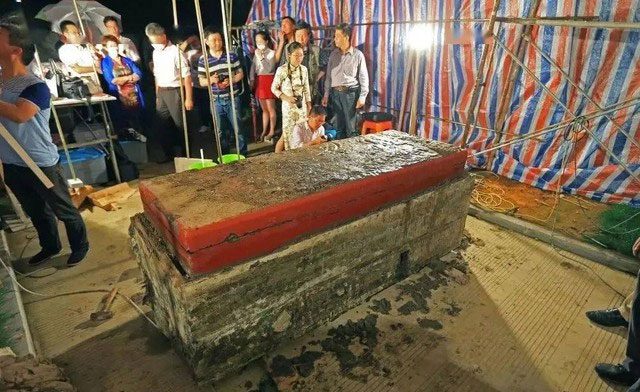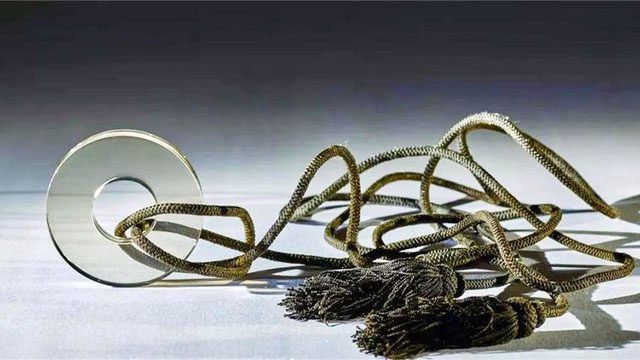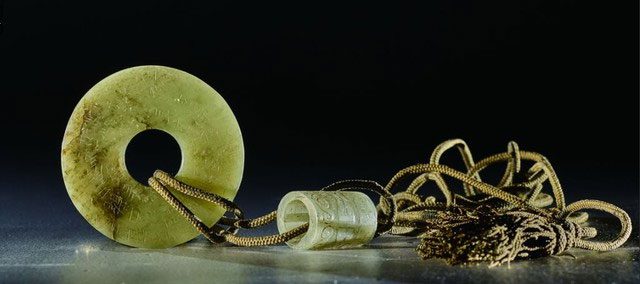Archaeologists even speculate that this object was left behind by someone who “time-traveled.”
In 2016, a resident in Taizhou City, Zhejiang Province, accidentally unearthed an ancient tomb while digging the foundation for a house. The individual promptly reported the discovery to local authorities and the Bureau of Cultural Heritage. A team of archaeologists was quickly dispatched to investigate. However, the ancient tomb was in a state of severe deterioration, making it challenging for experts to move around.

The coffin in the ancient tomb brought out for study after excavation. (Photo: Sohu).
While searching, they were attracted by an object that emitted a shimmering light when sunlight or artificial light hit it. It turned out to be a round piece of glass threaded on a string. According to experts, this tomb dates back to the Southern Song Dynasty, about 800 years ago, and it is unlikely that such a piece of glass would have existed during that era. Consequently, they decided to take it back to the laboratory for further analysis.

In the ancient tomb, archaeologists discovered a round piece of glass. (Photo: Sohu)
During the research process, the archaeologists found that this peculiar object had a diameter of about 7.5 cm; it was adhered to a small amount of cotton, and its edges had clear patterns. Its exterior closely resembled modern round glass pieces. They were puzzled by the object’s perfection. Many even suggested that this was an item left behind by someone who “time-traveled.”
Ultimately, after a period of testing, the archaeologists confirmed that the piece of glass was a cultural relic. It was a burial item placed in the tomb of Zhao Bayun. According to the book “Family Chronicles of Chicheng,” Zhao Bayun was the seventh generation descendant of Emperor Taizu of Song, Zhao Kuangyin.

In addition to the round piece of glass, archaeologists also found a similar round piece of jade in the tomb. (Photo: Sohu)
Along with the round piece of glass, archaeologists also found a similar round piece of jade in the tomb. They were a matching pair. Zhao Bayun was known as a cultured man of the Southern Song era. Throughout his life, he pursued elegance, which led him to create both the glass and jade pieces to reflect his noble character. He always carried them with him, and after his death, he chose to bring them into the tomb with him.

In the tomb, they also discovered many garments, socks, shoes, and accessories made from silk, brocade, and cotton silk, crafted with rare weaving techniques. (Photo: Sohu)
According to reports from the archaeologists, in Zhao Bayun’s tomb, they also found numerous garments, socks, shoes, and accessories made from silk, brocade, and cotton silk… dating back to the Southern Song period, created with rare weaving techniques. This collection of cultural relics was so valuable that they referred to it as “Song Dynasty Clothing Treasures.”
The excavation of Zhao Bayun’s tomb not only provides future generations with a chance to understand the ancient culture of China but also serves as a reminder of the importance of preserving cultural heritage.




















































